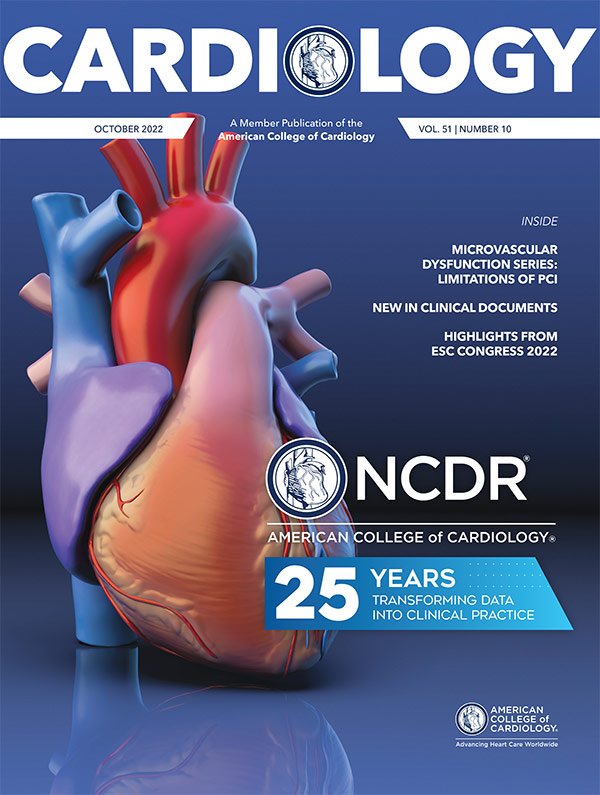Editors' Corner | Behind the Best Care is the Best Data: Celebrating NCDR

As the College marks the 25th anniversary of the NCDR, this month's cover story explores the impact of the novel concept of a professional society developing and growing a suite of registries to collect data to improve the quality of care and patient outcomes. What has come to be an integral part of hospitals, health systems and other facilities around the globe looking to optimize patient care and outcomes, was a bold and visionary move by the ACC in 1997 when it launched the CathPCI Registry.
The story of the NCDR is also one of collaboration and you'll read how partnerships with other societies and external influencers have helped to contribute to its growth and success. It's also one of optimism as we look to the future and the opportunities inherent in leveraging innovative new technologies to solve for health equity, involve patients in shared decision-making, and more.
"Looking ahead to the next 25 years," says Ralph G. Brindis, MD, MPH, MACC, "there's a real opportunity to leverage the timely data, expertise and real-world insights to foster and grow a true local, national and international learning health care environment."
Also in this issue, don't miss highlights from ACC's Quality Summit, which was wrapping up as this issue went to press, as well as ACC's Latin America Conference Together With CardioAcademic in Mexico City, and ESC Congress 2022 in Barcelona.
We also take a closer look at two new ACC clinical documents intended to help guide clinical practice. The anticipated Expert Consensus Decision Pathway offers practical guidance for the use of nonstatin therapies for LDL-C lowering in the management of atherosclerotic cardiovascular disease risk, while a new document from the ACC and American Heart Association outlines key data elements and definitions for chest pain and acute myocardial infarction.
In other hot topics, we're excited to continue the Spotlight Series on Microvascular Dysfunction, developed by invited Guest Editor, C. Noel Bairey Merz, MD, FACC, who noted that patients with small vessel ischemia and angina can pose both a diagnostic and therapeutic challenge to cardiologists. In the second article in the four-part series, Cindy L. Grines MD, FACC, and Pradyumna Tummala, MD, FACC, review the limitations of PCI in patients with small vessel disease.
Maternal mortality is on the rise in the U.S., and cardiovascular disease is the leading cause, chiefly from cardiomyopathy. Ersilia M. DeFilippis, MD, FACC, provides us an overview of the relationship between pregnancy and heart failure and management approaches for women with cardiomyopathy before and as a result of pregnancy, along with a handy table on the safety of cardiovascular medications during pregnancy and breastfeeding.
We also hear from Tran Nguyen, MD, who shares a perspective on how cardiology can be an ally for LGBTQIA+ communities, a population with an excess risk of cardiovascular disease. She shares a toolbox to help create a foundation for caring for these patients, along with look at prominent stressors and risk factors contributing to heart disease in these individuals.
In Heart of Health Policy, we hear from Rohan T. Mehta, MD, FACC, on the important role of advocacy in medicine – a perfect tie-in to this year's Legislative Conference taking place Oct. 16-18 in Washington, DC. We hope many of our readers will make time to join.
Enjoy this issue! As always, please send your thoughts and feedback to CardiologyEditor@acc.org and don't forget to share links to your favorite articles on social media using #CardiologyMag.
 Peter C. Block
Peter C. BlockMD, FACC
 John Gordon Harold
John Gordon HaroldMD, MACC
Keywords: ACC Publications, Cardiology Magazine, National Cardiovascular Data Registries, CathPCI Registry, Quality Summit, Cultural Diversity, Obstetrics, ACC Advocacy
< Back to Listings

